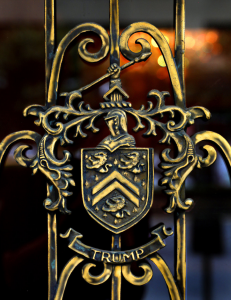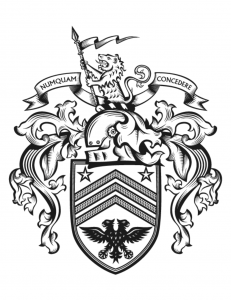 Replacing Twitter has become a bit of a topic over the past few weeks, for some fairly obvious reasons (well, one particularly notable one). In the last couple of days, with the continuing chaos surrounding it, this discussion has reached a fever pitch.
Replacing Twitter has become a bit of a topic over the past few weeks, for some fairly obvious reasons (well, one particularly notable one). In the last couple of days, with the continuing chaos surrounding it, this discussion has reached a fever pitch.
Imminent potential downfall aside, I’ve talked previously about the reasons I find Musk’s leadership concerning. In this article, I discuss what I’m going to do about it (Spoiler alert: not much, at least in the short term).
The way I see it, there are a couple of options, and I’m taking a little bit from each. Let’s start with the most obvious possibilities, and go from there:
Stay on Twitter
Look, for a lot of people this is a very valid option (at least as long as the site is alive), and if you’re choosing this route I have no ill will against you. In fact, at least for the time being, this is the option I’m choosing. I’m just also supplementing with a couple of others. Just in case.
Get Off Social Media
Also a valid option. However, I find that a lot of the connection and what little reach I have would be tough to replicate in the short term. I’m choosing this option too, at least a little bit; but if we ended here this would hardly be an article worth reading.
Go Back to Facebook
A lot of the problems I have with Elon Musk exist in Mark Zuckerberg, too; he’s just a little bit quieter about them. His obsession with the metaverse is exhausting. The platform is overrun with bots and bad actors. It promotes echo chambers and deplatforms genuine attempts at good faith communication. Its future is uncertain.
Due to some interpersonal dynamics, my Facebook time is already at a minimum, and I’m not really looking to increase that time.
Those are the options I have to consider in order to consider this a fully-featured article. Here are the new players in the game:
Go to Mastodon
Federated social media is a very compelling idea to me. Instead of a single network, Mastodon is a series of shared protocols that any server can adopt to host a subset of the entire network; but users on different servers can interact with one another over that shared protocol, meaning that the federated network (also known as the “fediverse”) tends to feel like a “best of both worlds” option. If a billionaire buys a node of the fediverse, if moderation on the server you’re a part of is too weak (or too strong), if the operator disables some feature that you want to be able to use, if you find your instance’s advertising excessive, moving to another server is simple, and you can still interact with anyone you were interacting with before if you want to. In short, it’s potentially groundbreaking, and helps solve a lot of the problems inherent in the current monolithic social media landscape. It’s also extensible and customizable, though you don’t have to do either.
But the barrier to entry is currently very, very high. It’s not going to be good for those who have trouble with technology. I don’t see a whole lot of support for people with disabilities, though that may be something I’m missing. Although moving away from bad server operators is simple, the barrier to entry is low enough that there will almost undoubtedly be many bad-faith server operators on Mastodon instances (case in point, Donald Trump’s “Truth Social” uses a modified version of the Mastodon code). But at its core, I also worry that this is just early-2000s web forums with a new coat of paint, and with all the echo chamber and radicalization potential of that format.
Still, this is the first really compelling new player in the game, and the one I’m actively trying out. Later in this series, I’ll be doing a signup tutorial and a review of my time on the platform.
Go to CounterSocial
I don’t know much about CounterSocial beyond what they advertise on their site. They’ve pitched themselves as a “Next-Gen Social Media” network with “No Trolls. No Abuse. No Ads. No Fake News. No Foreign Influence Ops.” Which is quite a bold statement. Essentially, while many social networks pride themselves on being all about “free speech” and not banning too many accounts, CounterSocial seems to be marketing to people who have been harmed by light-moderation social media, offering a very curated and protected experience to their users.
Their advertised features include artificial intelligence to identify deepfakes and identity theft, as well as partnerships with Botsentinel and Factlayer to combat foreign bots and misinformation. They offer self-destructing posts which automatically go away after a particular amount of time, as well as “ephemeral” (though no mention of it being encrypted) video conferencing, and support for Groups (something Facebook has had for a while but Twitter only rolled out quite recently). Good steps in the right direction.
However, their design is an absolute nightmare. It reminds me of the TweetDeck add-on to Twitter, except this is the default experience. The service seems to be bolting on new features everywhere they can (they have a VR mode, emergency radio and TV news, an “enhanced privacy mode” which feels more like a browser feature than a social media feature, and a file sharing function which feels more like Dropbox).
Still, with extensive support for users with disabilities and a focus on good-faith efforts at quality community building, I can’t entirely rule out CounterSocial. I’ll probably claim a username there at least.
Go to Tribel Social
Tribel doesn’t give much information about its distinctives, other than advertising itself as an “innovative pro-democracy Twitter alternative that’s free of hatred & fake news.”
“Innovative” doesn’t mean much, especially when they’re not providing details. On their website, they answer the FAQ “Why Is It Called Tribel And What Makes It The ‘Smarter’ Social Network?” with some vague language about targeted audiences, ranking posts and posters by popularity, filtering your feed, and working your way to becoming “a Star Contributor” to a particular category, which sounds to me like Verification by another name. They don’t answer why it’s actually called “Tribel.” None of this strikes me as particularly innovative; the most innovative thing might be verification within categories, which sounds a bit like verified hashtag users, but everything they mention here already exists elsewhere.
“Pro-democracy” sounds nice, and the fact that they’re up-front about their status as political activists (presumably left-leaning) is refreshing in its honesty. It does raise concerns about echo chambers, though; and while I’m becoming much more of a moderate with regard to echo chambers recently (more on that another time), this could still portend a lack of challenging ideas on the platform at best and a Parler-but-for-Democrats at worst.
As for “free of hatred & fake news,” this sounds like it’s going to tend toward heavy moderation. This is probably a good thing for some users, at least in theory; but the reality is, this site has already had some serious trouble with moderation and that was before the Twitter migration began.
I’m personally going to pass on Tribel for now.
Update, 11/26/22: Tribel has been caught doing some slightly shady things with actor Wil Wheaton’s content, as well as being operated by some people with a shady history of using other people’s money illicitly. (Yes, I’m aware of the irony of posting Twitter links here.) I’d pass on Tribel.
Go to Fanbase
Fanbase seems to be focused on monetization rather than on social interaction, baking Patreon-like features right into the platform. You can pay to support a creator or tip them for a particularly good post.
But the platform seems to be more a takeoff of Facebook than of Twitter, meaning that it’s unlikely to really catch on as a simple text and image sharing service. There’s no really easily-accessible information about their moderation policy, which is also concerning.
In short, this one is a non-starter for me.
There are also a couple of established names that are coming up in the conversation:
Go to Instagram
The first major establishment player that I’m taking seriously. Look, I’m already on Instagram (privately). This is emerging as a frontrunner in the “established networks” category. Their moderation is good, and their tools are good. It does what it does pretty well.
But Instagram is another Zuckerberg property, making its intentions and its long-term prospects a bit sketchy.
Plus, as an image-sharing and shortform video site, it’s not really a replacement for a microblogging site like Twitter. I’ll be using Instagram, but it won’t be replacing Twitter for me.
Go to Tumblr
The second major establishment player that I’m taking seriously. Tumblr is a good option (even though it’s not exactly microblogging), but for some reason it just hasn’t come up very much in the conversation; it may just be that it’s fallen enough by the wayside as to be completely ignored.
It’s got good, well-developed features and moderation. It’s got good discoverability, and a lot of people are already there. I think I’m already on Tumblr, in fact; but I haven’t logged in for ages.
I’ll keep this one in my back pocket as a possibility, and keep an eye out for it to become relevant in the conversation about possible social media replacements.
Go to Substack
It’s not social media.
So that’s where we stand right now. I’m going to continue posting about social media and Twitter replacements; I think the next piece will be a primer on signing up for and using Mastodon. But in the meantime, I’m going to really enjoy all the memes of Spirit Halloween taking over the empty Twitter building and Patrick saying we should “take Twitter and push out Elon.”
Update, November 26, 2022
Since the original publication of this list, a couple of new names have popped up, even as the number of Twitter refugees has reached a fever pitch with Musk’s announcements that he would un-ban former president Trump, along with thousands or more of previously banned accounts. The number of former Twitter users is truly impressive; if you’re one of them, and the previous options don’t appeal to you, here are the two newcomers as of late November 2022:
Hive Social
A bit of a dark horse, Hive emerged as an option in perhaps a surprising form: a MySpace competitor. Offering the ability to post text, images, gifs, and videos, as well as adding music and custom colors to your profile (!); and to see others’ posts in either a chronological Home feed or an algorithmic Discover feed, this seems like a more well-rounded social media platform than the Twitter that it’s taking on; at least in terms of amenities.
Hive is also woman-led; CEO Raluca Pop is a young Romanian woman who developed the app herself. Of course, that doesn’t mean anything if the service is bad, but her leadership certainly brings a different point of view to the platform than many of Hive’s competitors. And her vision seems to be gaining traction; Hive has raised an impressive amount of money in a short amount of time.
Hive’s moderation policy appears to be free-speech friendly but not moderation-averse. The community guidelines read almost like boilerplate, so there’s no surprises to be had there.
The surprises that are to be had are in its web app: namely, that it doesn’t have one. At least not yet. Right now, Hive is entirely accessed via its iPhone app or its recently released Android app.
How does it work? Tough to tell.
I made an account several days ago, but I don’t follow anyone. In the course of writing this update, I tried to see how the mechanics of the app work, since the website is light on details.
Alas, the servers seem to be down.
And, look, that’s not a huge issue right now. It’s early days, and with the Twitter exodus reaching a fever pitch as Musk welcomes almost every previously-banned account back to the platform with open arms, it’s inevitable that replacement services would have issues keeping the servers running.
Maybe give this one a few days.
Update, 12/1/22: A German security research firm called Zerforschung has identified a troubling number of security vulnerabilities with Hive. To their credit, Hive responded by going offline to fix them; however, the fact that these vulnerabilities are so extensive is quite concerning. It’s worth waiting this out, or joining with a burner email address so that a data breach doesn’t impact you very much. And, it should go without saying, don’t reuse a password from another website on Hive.
Post
As the laconic name might suggest, Post is leaning heavily into journalism. With support for longform pieces (of “any length”) and the ability to buy, sell, and tip for articles natively, this app isn’t likely to be an idle scroller.
It does, however, promise civility, lively debates, and a robust moderation policy, as well as the lofty goal of resurrecting a social media experience that’s “fun, introduce[s] you to big ideas and cool people, and actually [makes] you smarter.” I find the claim that social media ever did all of that at once a bit dubious, but maybe I followed the wrong people.
Post is currently in closed beta; if you’re interested, joining the waitlist with my referral code will get us both closer to being able to see whether their claims are true or just marketing.
Update, 11/28/22: Some buzz has been going around about Marc Andreessen’s investment in Post. While this could be a nonissue, it is worth noting that Andreessen also owns shares of Facebook and was a co-investor helping Elon Musk make the Twitter acquisition (even reaching out to him directly to strike the deal); meaning that there is quite evidently a potential conflict of interest at best, and an active approval of Musk’s actions as Twitter CEO at worst. Concerns have also been raised about the Post terms of service, which includes “net worth” as a protected class; and about their roadmap, which pointedly notes that they will not be pursuing accessibility features at this time. This may also be another hard pass.
My first port-of-call on this odyssey away from Twitter remains Mastodon. I’m still working on a brief overview of how to use federated social media, so stay tuned for that. In the meantime, let me know: are you leaving Twitter? What are you trying out to replace it?
 In my home state of Indiana, this generally takes the form of the state taking aim at Indianapolis, the largest city and bluest dot in the state. In years past, it’s been attacks on our already anemic public transit and our already horrible pedestrian safety. But the latest expression of that MAGA M.O. against my city has been through a now-infamous bill designated HB 1136. The bill, innocuously named “School corporation reorganization,” is very intentionally targeted at the largest public school systems in Indiana by dissolving public schools in urban areas where charter schools are more successful. Since the GOP in Indiana (like in other states) has been diverting public funds from public education to charter schools for decades, driving public schools into crisis and forcing parents to choose charter and public schools if they want their children to have a meaningful education, this is essentially the legislative equivalent of the childish “stop hitting yourself” bullying technique.
In my home state of Indiana, this generally takes the form of the state taking aim at Indianapolis, the largest city and bluest dot in the state. In years past, it’s been attacks on our already anemic public transit and our already horrible pedestrian safety. But the latest expression of that MAGA M.O. against my city has been through a now-infamous bill designated HB 1136. The bill, innocuously named “School corporation reorganization,” is very intentionally targeted at the largest public school systems in Indiana by dissolving public schools in urban areas where charter schools are more successful. Since the GOP in Indiana (like in other states) has been diverting public funds from public education to charter schools for decades, driving public schools into crisis and forcing parents to choose charter and public schools if they want their children to have a meaningful education, this is essentially the legislative equivalent of the childish “stop hitting yourself” bullying technique. Locally, the charter schools in Indianapolis have had a terrible track record. More than once per year since 2001, Indianapolis has seen charter schools close for poor performance, for cheating on standardized tests, for using public funds on political campaigns, and for literally just…disappearing. Statistically almost a third of Indianapolis charter schools fail, but some of the ones that stick around employ draconian discipline for the most minor of infractions, and more than half of them perform significantly worse than their public school counterparts.
Locally, the charter schools in Indianapolis have had a terrible track record. More than once per year since 2001, Indianapolis has seen charter schools close for poor performance, for cheating on standardized tests, for using public funds on political campaigns, and for literally just…disappearing. Statistically almost a third of Indianapolis charter schools fail, but some of the ones that stick around employ draconian discipline for the most minor of infractions, and more than half of them perform significantly worse than their public school counterparts. Despite all of this, Indiana State Representative Jake Teshka (who, it must be noted, represents no school districts who would be affected by his bill) proposed HB 1136 in early January, which would transfer control of the schools in five Indiana school districts to charter schools. One of those districts, Indianapolis Public Schools, is where my children are enrolled. We love our school, and almost all of the parents I know do, too.
Despite all of this, Indiana State Representative Jake Teshka (who, it must be noted, represents no school districts who would be affected by his bill) proposed HB 1136 in early January, which would transfer control of the schools in five Indiana school districts to charter schools. One of those districts, Indianapolis Public Schools, is where my children are enrolled. We love our school, and almost all of the parents I know do, too.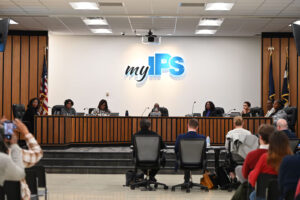 Now, is there a chance that its language will make it into other bills before the legislative session is over? Are there other bills that threaten my children’s beloved school, in one way or another? Is Governor Braun’s tax plan still threatening to pull funding away from a public education system that’s already severely underfunded? Are Republicans still trying to exert their control over the city of Indianapolis? Is there a possibility that HB 1136 was never intended to pass as-written in the first place, or that it was proposed as a way to sneak a less-awful but still-bad bill across the finish line?
Now, is there a chance that its language will make it into other bills before the legislative session is over? Are there other bills that threaten my children’s beloved school, in one way or another? Is Governor Braun’s tax plan still threatening to pull funding away from a public education system that’s already severely underfunded? Are Republicans still trying to exert their control over the city of Indianapolis? Is there a possibility that HB 1136 was never intended to pass as-written in the first place, or that it was proposed as a way to sneak a less-awful but still-bad bill across the finish line?











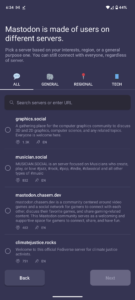











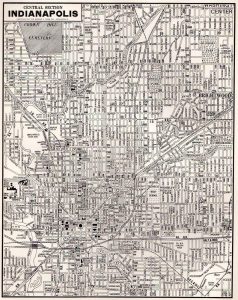
 I’m pro-life. That’s why I’m grieved that George Floyd’s mother was given an extremely late-term abortion against her will by the Minneapolis Police Department.
I’m pro-life. That’s why I’m grieved that George Floyd’s mother was given an extremely late-term abortion against her will by the Minneapolis Police Department.
